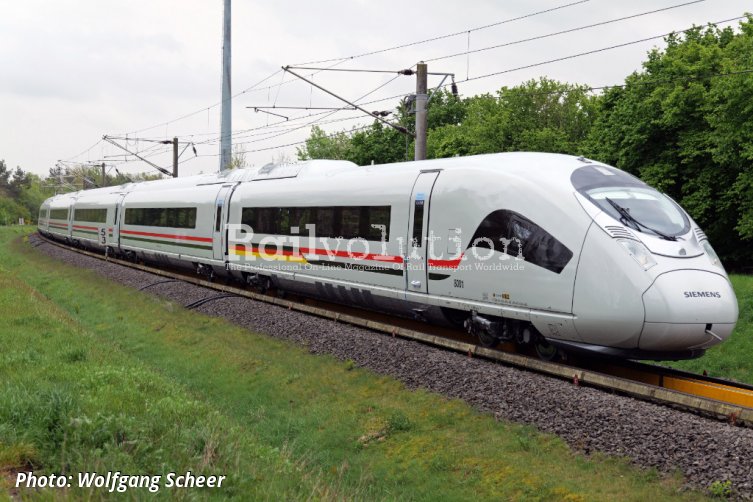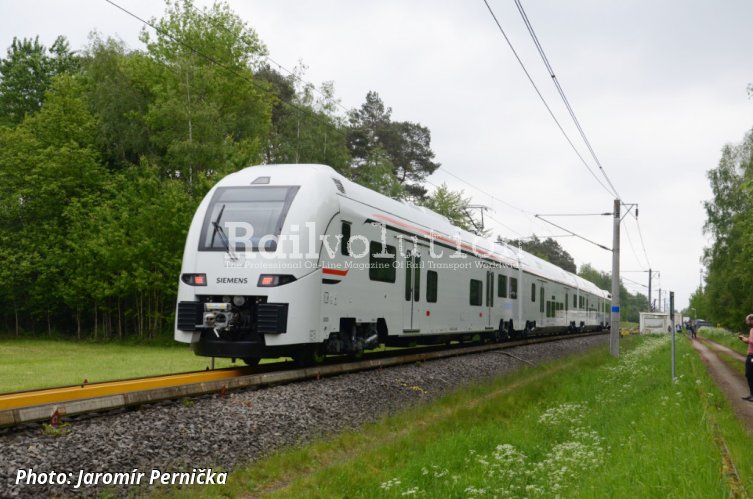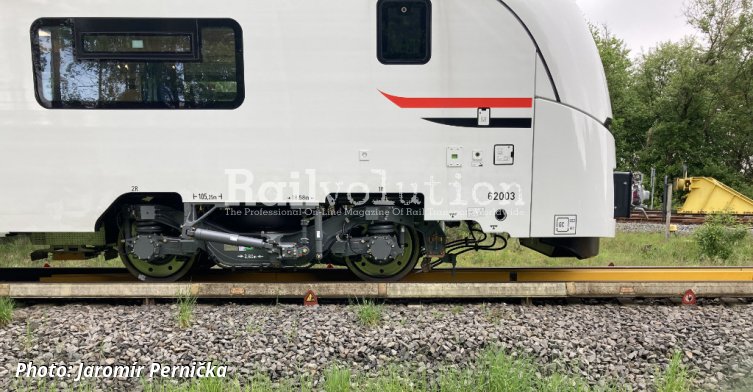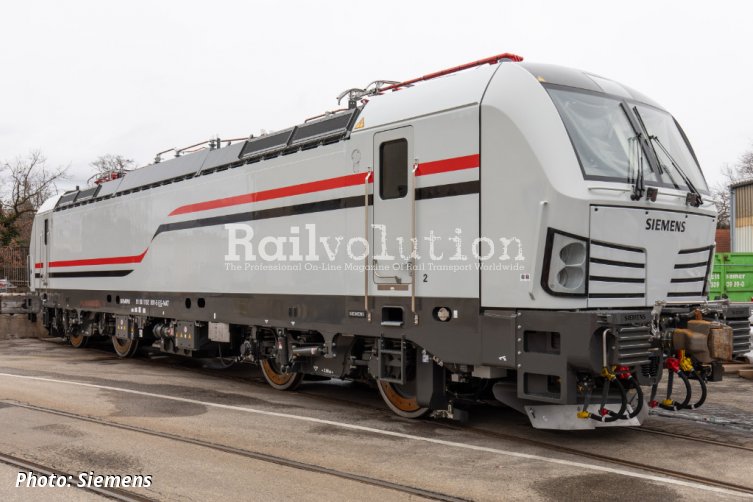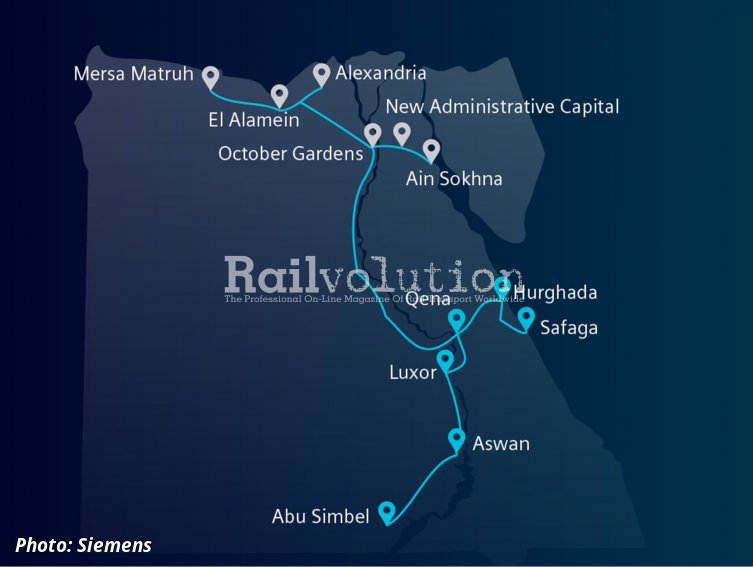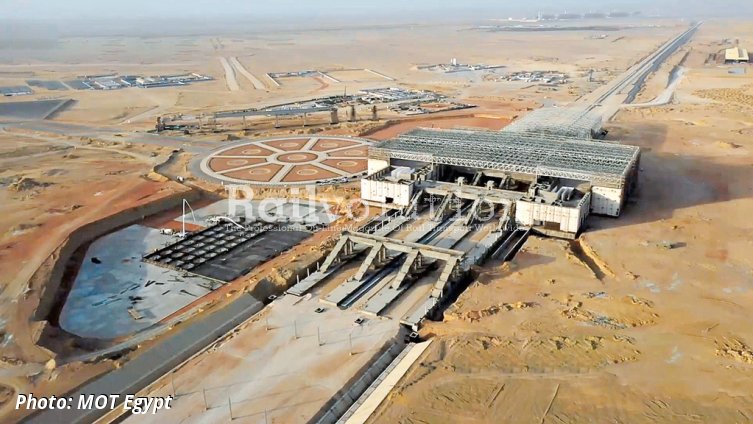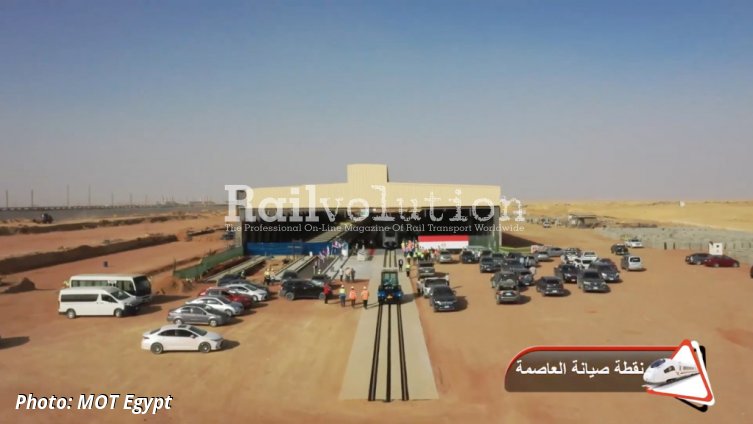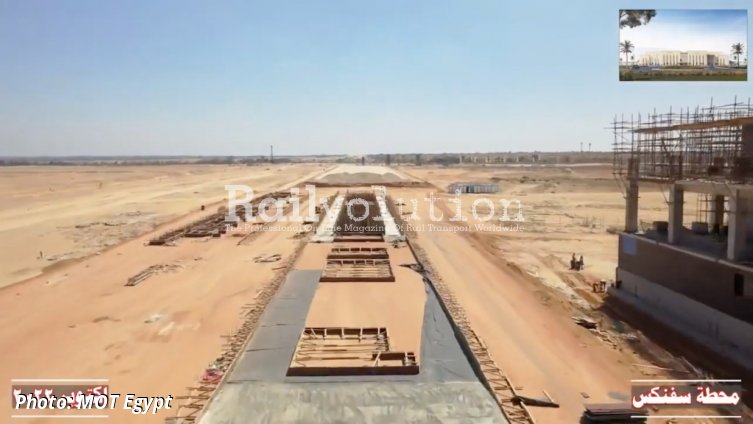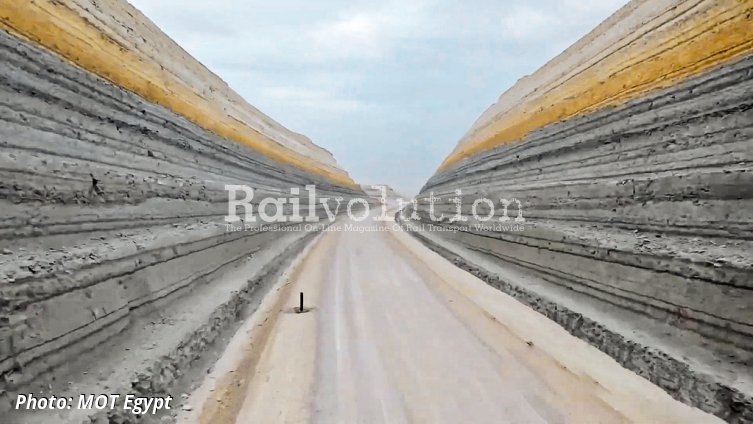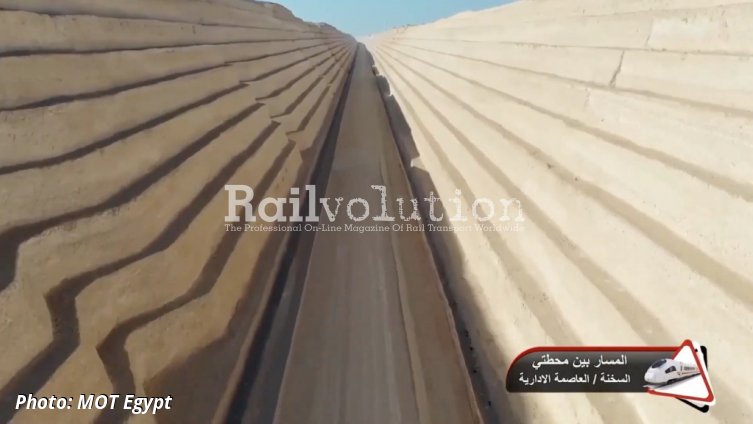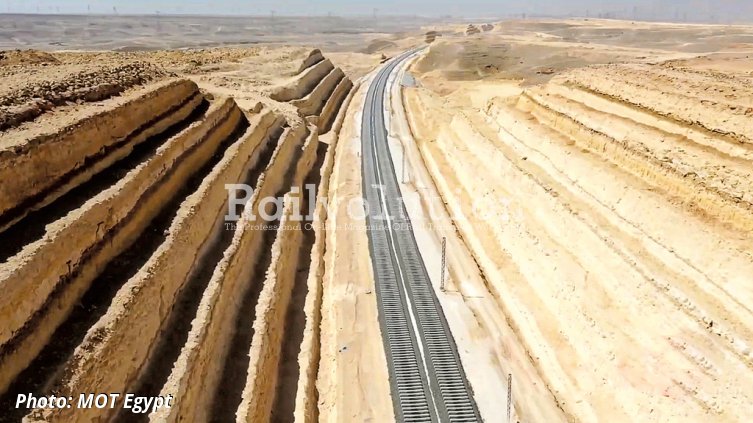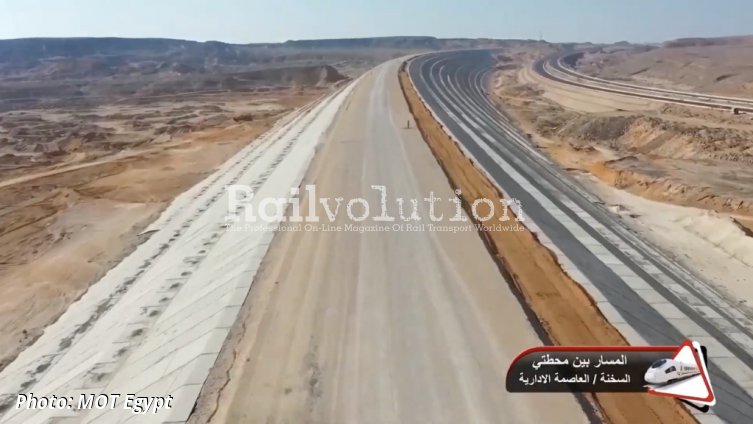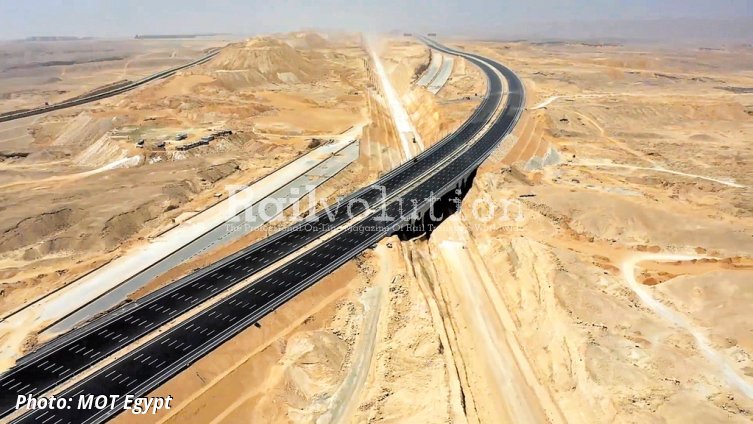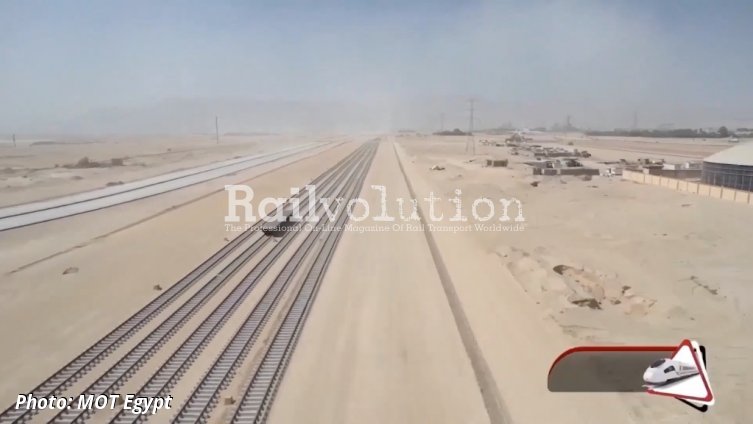A very new railway for Egypt
posted on 3rd Jun 2024 18:07
Siemens Mobility is making progress on a huge contract for Egypt that is set to take rail transport in the country to a whole new level. In January 2021, a Memorandum of Understanding was signed between NAT (National Authority for Tunnels, a government body under the Egyptian Ministry of Transport) and Siemens Mobility, Orascom Construction and The Arab Contractors to start building a comprehensive railway system in Egypt for passenger and freight transport.
Then, on 31 August 2021, a contract was signed between NAT and Siemens Mobility, which together with both partner companies will ensure the construction of the first line. This will be in the northern part of Egypt, will be 660 km long and will connect the Red Sea port city of Ain Sokhna, Cairo, 6 October and Marsa Matruh on the Mediterranean sea; it will include a branch line to Alexandria, also on the Mediterranean.
Then, on 28 May 2022, NAT signed another contract with Siemens Mobility and the same consortium partners to create a new railway system in the country. The network with a maximum design speed of 250 km/h (the maximum service speed will be 230 km/h) will be electrified by 25 kV 50 Hz and will have a total length of approximately 2,000 km, connecting 60 stations and enabling approximately 500 million journeys per year. This is roughly the same number as on the existing network, which carries about 1.4 million passengers daily, or about 511 million annually.
The other two main lines in the system will be:
- a line of about 1,100 km between Cairo and Abu Simbel on the Sudanese border, which will connect the capital with the growing economic centres in the south of the country and enable the development of communities up and down the Nile,
- a 225 km line between Luxor, Hurghada and Safaga on the Red Sea.
Description to the map in the pictures: October Gardens is a station in the City of October 6, located in the governorate of Giza, about 30 km west of Cairo. It is located in the desert and has a population of approximately 185 000 plus about 500 000 more in the wider area. It has many private universities and is home to one of the largest industrial zones in Egypt. The city covers an area of 482 km2 and is expected to eventually have a population of 6 million.
In April 2008, it was declared the capital of the governorate on 6 October. After its dissolution in April 2011 as a result of the Egyptian Revolution, it was reintegrated into the governorate of Giza, to which it originally belonged. The city's name commemorates the beginning of the Arab-Israeli war, which fell on 6 October 1973, the same date chosen as Armed Forces Day in Egypt.
The network
From a railway point of view, this is an ideal geographical arrangement, as the most populated area of Egypt is in the Nile valley and its delta in the north by the Mediterranean Sea, so long and narrow areas will be served, similar to Japan. Approximately 90 % of Egyptians will thus have access to this electrified railway, which will reduce CO2 emissions by 70 % compared with car or bus transport.
Moreover, a comparison of the lengths of the current rail network (over 5,600 km) and the new network (around 2,000 km) clearly shows how much railway development is involved and how its transport capacity will be increased, all the more so in view of the higher line speeds.
Siemens Mobility will install the power supply and ETCS Level 2. Together with its partners Orascom Construction and The Arab Contractors it will provide the comprehensive turnkey services for the design, installation, commissioning and maintenance of the entire system over a 15-year period. The consortium partners are providing the superstructure installation, while NAT is handling the construction of the infrastructure foundations, including the artificial structures of the substructure (bridges and tunnels).
21 stations for the 660 km network (13 high-speed train stations, 8 regional ones) are being built, together with two depots - one in October Gardens near Giza and the second one in Quena. The Siemens Railigent application will be used to manage and maintain the assets, and automated ticketing will be introduced.
Siemens Mobility's share of the contract amounts to 8.1 billion EUR and includes a 2.7 billion EUR contract for the first line, signed on 31 August 2021; this is the largest contract in company's history. Up to 40,000 jobs will be created directly in Egypt and a further 6,700 at Egyptian suppliers, as well as indirectly in the wider Egyptian economy, in connection with the construction of the new railway.
The new services
The new network and trains will be operated by an operator that is still being selected by NAT, but it may well be DB International Operations (DB IO, formerly DB International), which is organising the construction on behalf of the German side. Siemens Mobility will be responsible for the maintenance of the vehicles, since its contracts include a 15 year maintenance agreement. The first part of the network, which was named the Green Line, is scheduled to be operational in 2027.
An important aspect is that the existing (obsolete) Egyptian lines operated by ENR and the new electrified lines will not be linked, so there will not be the possibility of running existing vehicles on the new network (and vice-versa). The latter will also be separated from the existing road infrastructure for greater traffic safety, as 400 no-level crossings with the road (overpasses and underpasses) will be established on the 660 km long first line currently under construction. 120 substations will be set up to supply the line.
At present, substantial progress has been made in groundworks, track laying, and infrastructure development for the first phase by March 2024; however, the length of the completed track was not specified, but the whole site involves huge earthworks and the building of generous stations. On 4 April 2024, British Steel announced that it will ship 9,500 t of rail to the Port of Alexandria between April and June.
In total, this first line alone covers an area of around 20 million people. The aim in the first phase is to link Cairo in particular with the new government district to the east. The citizens are literally delighted with the project and are watching its progress closely, because road traffic in the country is already unbearable. With the new network, the railway will be more attractive and competitive: for instance, currently, a train journey from Cairo to Aswan typically lasts around 13 hours, but with the introduction of 230 km/h railway, this travel time will be reduced to just 6 hours. The idea is that passenger trains will run on the new railway during the day and freight trains at night, which will be used for supplies to/from the ports.
The new trains
For the operation, Siemens Mobility will supply vehicles from its product platforms, which will include up to 41 eight-car Velaro units, 94 four-car Desiro HC regional units and 41 Vectron locomotives for freight transport. In 2022, there was talk about 15 Velaros, 34 Desiro HCs and 24 Vectrons ordered. However, Siemens does not specify what the current ordered numbers are. The freight wagons are ordered from another supplier. Its name as well as the exact numbers and parameters of wagons were not announced yet.
On 8 May 2024, Siemens Mobility presented a Desiro HC for Egypt for the first time at the Wegberg-Wildenrath test facility. This was the third unit; the first one already arrived at PCW last summer and was shipped to Egypt at the end of 2023.
The Egyptian customer demanded the same quality of the trains as in Europe, so the same interior design as at the DB trains was chosen for both the Desiro HC and Velaro units. The Desiro HCs, which according to the Egyptian scheme are designated Class 0462, are of the same design as the four-car Class 1462 EMUs of DB for the Franken-Thüringen-Express (FTE). They have a top speed of 160 km/h, a power output of 4,800 kW (800 kW more than the FTE Desiro HCs) and a Bo'Bo'+ 2'2' + 2'2' + Bo'Bo' axle arrangement, with the end cars being single-deckers and the intermediate cars double-deckers.
The length of the train over the couplings is 105.25 m, the number of seats is 389 and two wheelchair spaces are available, together with a multipurpose area for e. g. transport of bycicles. In total, there are three standard toilets and one PRM toilet available. Understandably, for desert operation in temperatures of up to +50 °C and simultaneously with high humidity in areas near the sea, some design modifications had to be made.
The air-conditioning has been strengthened so that two independent air-con units are installed in the intermediate double-deck cars, which can replace the other air-con in the event of a breakdown. To prevent from desert sand and dust improved sealings are fitted, special filters for air-supplying systems, like HVAC and compressor, are fitted. The cooling power was significantly increased, as was that of the auxiliary power supply. Special spoilers between cars to reduce sand turbulences were installed. The exterior paint of the trains is mostly white due to the high temperatures, supplemented by stripes in the colours of the Egyptian flag.
Siemens Mobility produced five pre-series units at the Krefeld plant for testing and approval purposes. The authorisation is carried out in Egypt. After that, batch production is scheduled to start in summer 2024.
Also in Krefeld is underway the assembly of Velaros, which will also match the DB units in design, namely the ICE3 neo Class 408, however they will have a top service speed of 230 km/h only. The first of the five pre-series trains appeared at PCW at the turn of 2023/24 - with the designation 8001, which also corresponds to the DB scheme. This unit will be presented to the public at this InnoTrans and will then be shipped to Egypt. After that, batch production is scheduled to start in summer 2025.
The first two new 25 kV Vectrons with a top speed of 120 km/h (the slowest version so far) and a power output of 4,800 kW were already built at the München works and are currently on test at PCW. They have also been inspected by the Egyptian Minister of transport. Both locomotives will be shipped to Egypt by the end of 2024. The batch production is to start in 2025.
The new „European“ railway will mark the first ever electrified lines in Egypt. In the case of the Velaro family, these will be the first deliveries of these units to the African continent. Desiro HC regional EMUs are already in service in neighbouring Israel. There will be the first deliveries for Vectrons outside of European railways and will be the second application of automatic coupling - the first was the 1,520 mm gauge Class Sr3 for VR (and subsequently for Fenniarail). The Egyptian Vectrons will also represent only the second version of these locomotives with solely 25 kV traction equipment - the very first again were the Finnish Vectrons.
Related news
- InnoTrans 2024 report (2)
- Alstom starts construction of new depot for the maintenance of FGC trains
- Toshiba HDB 800 shunters undergoing testing
- Desiro HC for Egypt unveiled
- The first nine-car ComfortJet in regular service
- Further expansion of Siemens's München factory
- Siemens Mobility to establish America’s first high-speed rail production facility


